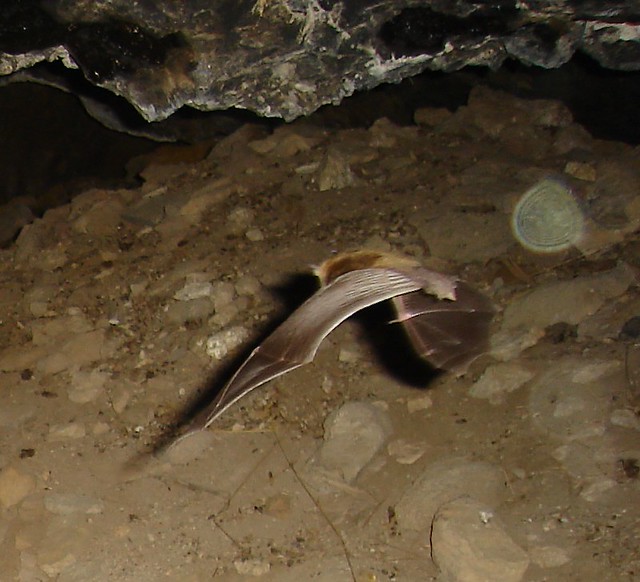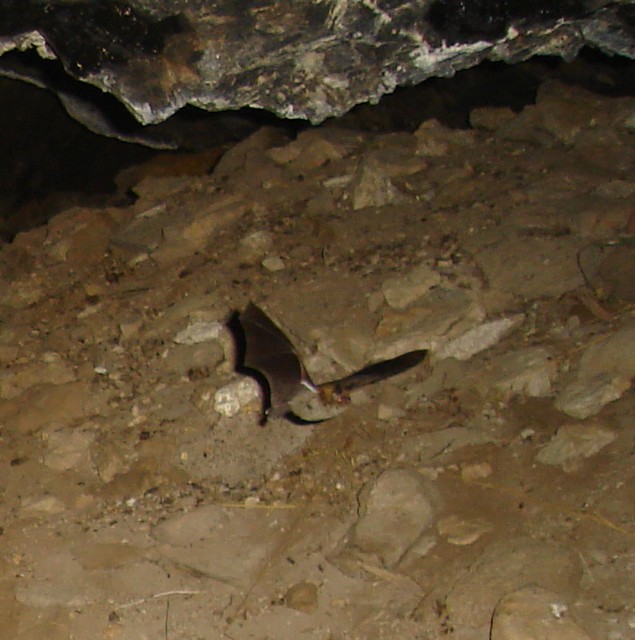And, I'd also like to move the cam trapping ball forward on them. I know perfect photos of flying bats can be captured - the amazing Michael Durham does it with his eyes closed. But, I'd like to see if it can be refined using $200 homebrew cam traps, instead of $2,000+ pro setups. I've seen the Codge show some success, so thought I'd give it a go too.
Thus, once the bats returned to the bat cave down in the Tehachapis, I set another cam.
Here's the few serendipity shots it caught. Nothing good, but showing some potential. I say "serendipity" because most are photographed somewhat incidentally - the photographed bat happens to be in the scene 2 seconds or so after a bat or rodent triggered the waking of the cam trap. The cam is way too slow for direct real-time photography, so density or frequency of bats is a must if you hope to have one in the scene when the shutter finally snaps.
In this case, the mouth of a bat cave, as they're coming and going.
These first 3 shots seem to be a Myotis (thanks Codger for your help). Might just be Myotis californicus, the California Myotis. But, it could be Myotis ciliolabrum, the Western Small-footed Myotis. Like the Codge, I lean towards ciliolabrum - a Species of Special Concern in CA.

Buffy body, dark wings and mask, and medium ears suggest Myotis ciliolabrum

Side shot that may be the same Myotis species

Butt shot that may be the same Myotis species
This next photo might be the same Myotis species as well, but the head looks rustier, and the ears smaller, suggesting maybe a 2nd/different Myotis species.

Perhaps a different Myotis? Body looks pale, head rusty and ears small and dark
Finally, this last photo definitely seems to show a different species from the others. Likely choices are Myotis evotis, the Long-eared Myotis, and Corynorhinus townsendii, Townsend's Big-eared Bat. Both are Species of Special Concern that range into the Tehachapis.

Bat that appears to be brown all over with big ears - Townsend's Big-eared?
The technique definitely needs more work.
But as I said, it shows some potential.
====
References:
- Camera Trap Codger - Night Roost
- Camera Trap Codger - Poison Water Guzzlers - Predators
- Camera Trap Codger - Spooks in the Rock Pile
- Smithsonian National Museum of Natural History - Townsend's Big-eared Bat
- Smithsonian National Museum of Natural History - California Myotis
- Smithsonian National Museum of Natural History - Western Small-footed Myotis
- Smithsonian National Museum of Natural History - Long-eared Myotis
- Michael Durham Photography - Bats / (also on flickr)
- California Department of Fish & Game - Species of Special Concern
- The Nature of a Man (this blog) - The Bat Cave
